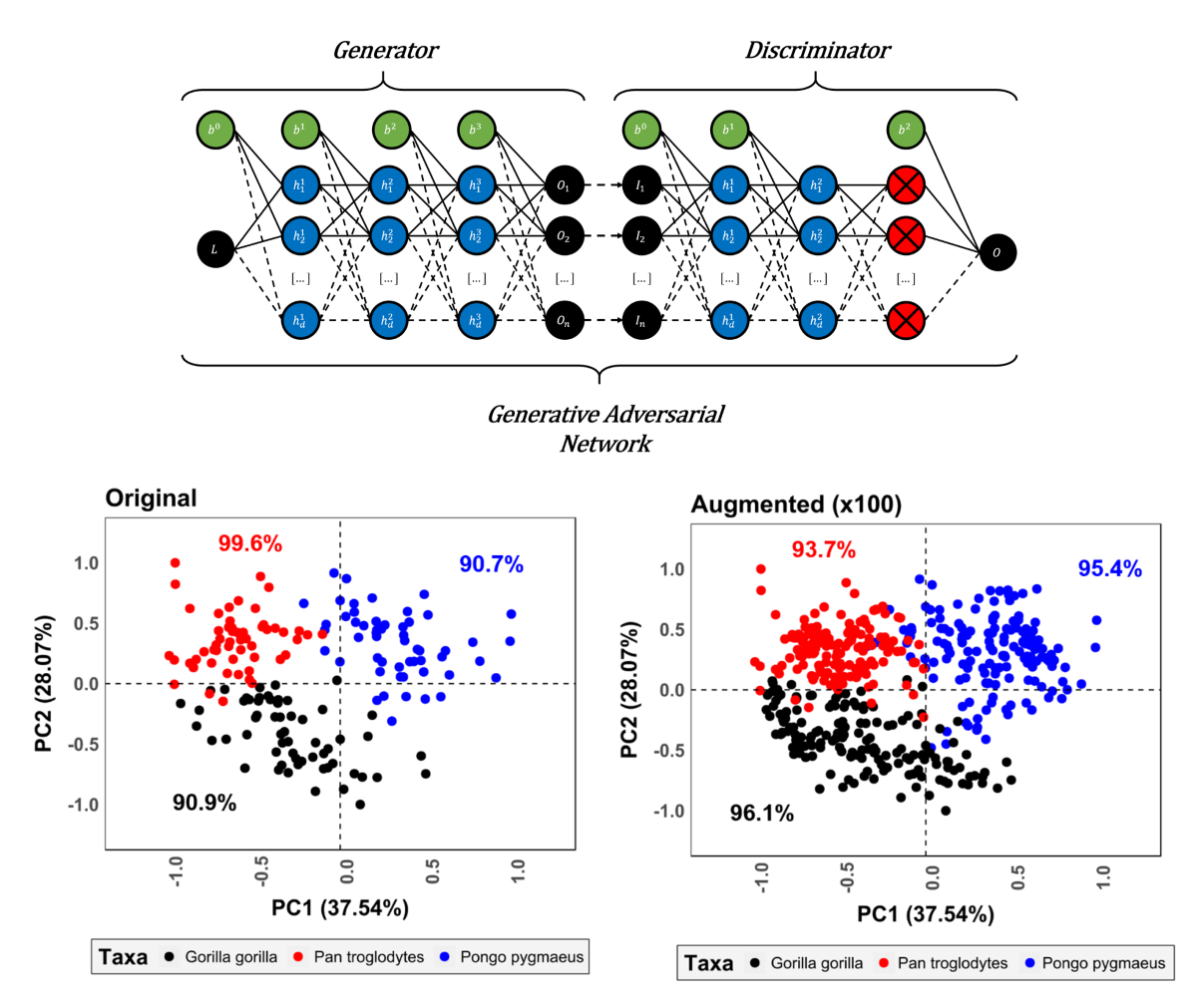The fossil record is notorious for being incomplete and distorted, frequently conditioning the type of knowledge that can be extracted from it. In many cases, this often leads to issues when performing complex statistical analyses, such as classification tasks, predictive modelling, and variance analyses, such as those used in Geometric Morphometrics. Here different Generative Adversarial Network architectures are experimented with, testing the effects of sample size and domain dimensionality on model performance. For model evaluation, robust statistical methods were used. Each of the algorithms were observed to produce realistic data. Generative Adversarial Networks using different loss functions produced multidimensional synthetic data significantly equivalent to the original training data. Conditional Generative Adversarial Networks were not as successful. The methods proposed are likely to reduce the impact of sample size and bias on a number of statistical learning applications. While Generative Adversarial Networks are not the solution to all sample-size related issues, combined with other pre-processing steps these limitations may be overcome. This presents a valuable means of augmenting geometric morphometric datasets for greater predictive visualization.

